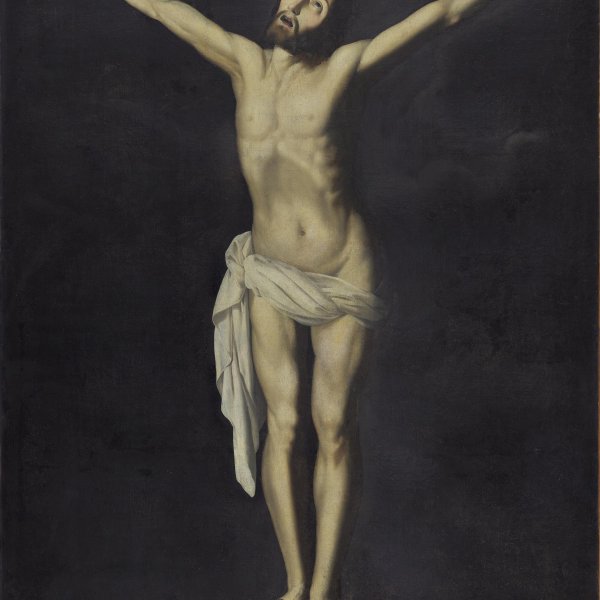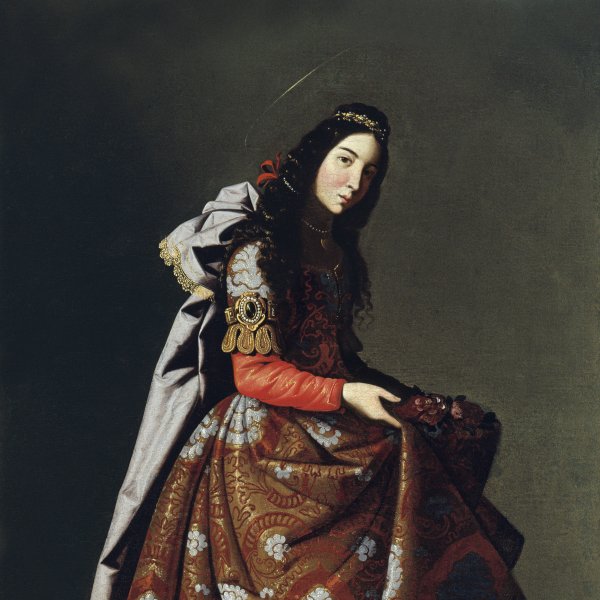Zurbarán
Fuente de Cantos, 1598-Madrid, 1664
Zurbarán was born in Fuente de Cantos, a village in Extremadura, in 1598. He trained in the workshop of Pedro Díaz Villanueva in Seville. On completing his apprenticeship, in 1617 he established himself in Llerena,
where he lived for more than ten years. The following year he married his first wife, María Páez. She bore him three children, one of whom, Juan de Zurbarán, was an excellent still-life painter. He returned to Seville
on receiving a commission from the Dominican friars of San Pablo el Real to produce a series on the life of Saint Dominic. The first dated work from this period is the Crucifixion in the Art Institute of Chicago.
Despite his youth, these works already display an impressive skill at reproducing materials, great expressive intensity in the faces, delicate hues and a rich palate with a considerable variety of shades of white.
He also worked for the friars of the Merced Calzada, for whom he executed the Saint Serapion now in Wadsworth Atheneum in Hartford. By this time he was one of the most important and famous painters in the whole
of Andalusia and ran a large workshop.
In 1634 he moved to Madrid to decorate the Hall of Realms of the Buen Retiro palace with a series of ten canvases illustrating the Labours of Hercules and two canvases on the Defence of Cádiz. He returned to Seville
the following year. This was his period of artistic maturity and also his most fruitful, as it witnessed the execution of some of the most important series, such as those for the charterhouse of Jerez de la Frontera
and the monastery of Guadalupe.
During his final years he produced private devotional works in which his style became more luminous and gentle. Zurbarán was an active exporter of paintings to Spanish America: Mexico, Lima and other major cities.
In 1658 he returned to Madrid, where he lived until his death on 27 August 1664.






